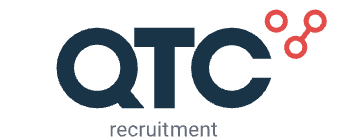Written by Rinesa - 6 Minutes reading time
Maximising career growth in your Life Science organisation

People are the most important asset in any organisation. Talent development professionals aim to ensure those people have strategic developmental opportunities that match organisational goals. After all, matching the alignment between the people and organisational goals is vital for fostering resilient foundations of an organisation’s sustainability.
Organisations must put forth consistent efforts to nurture continuous talent growth, capable workers and high organisational performance. Most companies focus on workforce planning, skills gap analysis, employee training and succession planning to drive their talent priorities and expand the competencies of their staff.
But an area that often is overlooked are the paths employees can take to grow within the organisation, which can be just as important, if not more important than unstructured learning and development opportunities. Talent priorities must align with professional advancement opportunities, or companies risk undermining their own talent development efforts.
For instance, outdated L&D programs erode a company’s goal to center its talent processes around skills development. As a result, employers and talent development professionals are focusing more on career growth-talent priorities alignment with each passing year.
According to Mercer’s 2022 Global Talent Trends report, employee learning and development were among talent management’s primary concerns. Gartner’s 2021 survey also found that helping workers build critical skills and competencies and progress their careers is now a non-negotiable priority.
Career growth
Career growth is the action of an employee advancing from their current position to one of a “higher” standing. Some refer to this as a promotion or climbing the corporate ladder. To achieve the growth, an employee must have continuous improvement of their skills, abilities and competencies and have the creation of opportunities and tools that help them advance.
But employee career growth isn’t only about earning new titles, positions and duties. It is about the knowledge and experience they gain along the way, allowing them to become more well-rounded practitioners.
Moreover, career growth is about the sense of fulfilment and purpose every person needs to feel accomplished and happy with their professional journey. Without that, employees often feel stuck and no longer find their jobs meaningful.
Organisational talent priorities and career growth
Organizational talent priorities refer to a company’s focus on talent development, workforce planning, skills gaps, recruitment and talent retention. These objectives emphasize initiatives and strategies that impact employees’ engagement, job satisfaction and professional advancement, which are among the essential elements for business longevity and stability.
Employees’ skills, knowledge and commitment are among the principal drivers of a company’s sustainability, which is why organisational talent priorities intertwine with talent growth. One can hardly go without the other. For instance, even though internal mobility might be your main talent priority, your goal is to maintain top performers by helping them up-skill and stay with your company instead of hiring externally.
Career growth has the same objectives: to enable employees’ professional development and foster retention. Therefore, regardless of the initiatives you use to meet your talent priorities, you will always have to leverage employee career growth to make it happen.
The risks of disregarding professional development and not embedding it into your talent priorities can be costly and have a lasting negative impact. Here’s what you can expect.
The risks of not aligning organisational talent priorities and career growth
Failing to meet employees’ career and L&D needs and objectives
People play a key role in every company’s success and need up-to-date skills and expertise to perform their jobs effectively. But they must also feel that their contribution makes a difference and that they’re not forever stuck in the same role with the same assignments. Otherwise, they will face a productivity decline and lack a sense of purpose. Companies must ensure their employees continuously learn and grow, giving them resources and opportunities to meet their career objectives. The best way to achieve that is to make personalised L&D programs a talent priority.
Building ineffective partnerships
No one aspires to foster partnerships with companies that fail to ensure there is no business disruption, which includes the inability to develop talent. You must eliminate talent risks before partnering with stakeholders and other businesses. Aligning your talent priorities with employee career growth is beyond important for building strong and effective partnerships. The same applies to in-house collaborations, as HR departments and L&D teams must share matching goals and work together on growing skilled talents.
Not fostering a growth mindset
Misalignment between organisational talent priorities and career growth results in a lack of a resilient and impactful learning culture. Without tangible efforts and initiatives to prioritise employees’ professional development and success, it’s impossible to foster a growth mindset in a company, leading to productivity decline, turnover, lack of innovation and underdeveloped internal mobility.
Poor career development, up-skilling and re-skilling programs
Many companies highlight preparations for the future of work and creating a diverse workforce as their talent priorities. Both goals help meet vital organisational objectives, such as enabling digital transformation and boosting employee retention. And both need effective career growth initiatives, such as inclusive re-skilling programs and tech-oriented employee training. Not aligning professional development and talent priorities often leads to poor L&D programs and missed opportunities.
How to align career growth and organisational talent priorities
Identify organisational and employee objectives
The first step toward aligning career growth and talent priorities is to dive deeper into organisational needs and objectives. A company should start by identifying its short-term and long-term goals and the workforce’s skills gaps and potential. They should identify what abilities and expertise their employees lack to meet organisational strategic objectives and how to close that gap (e.g., coaching, training, or recruitment).
Foster organisational culture that prioritises professional development
Developing your staff and providing tools and platforms to adopt new skills and knowledge is just as important as making higher revenues. Foster a culture that values expertise, innovation and training and encourages employees to participate in available L&D opportunities.
Build relevant partnerships within the company
Talent practitioners can often be conduits for other business units. Building partnerships and playing connector helps to eliminate data silos and helps departments and units improve collaboration. Partnerships within your company are no less significant than external collaborations, as this helps more accessible data and knowledge sharing. It also helps managers and employees understand the objectives and bottlenecks of other departments and work on addressing them.
Start formal internal programs
Implement formal internal programs that align with organisational strategic goals and prioritise up-skilling and re-skilling. That way, you increase internal mobility and boost employee retention, resulting in lower recruitment costs and higher productivity.
Provide personalised career growth and development plans
It’s well-known that the one-size-fits-all formula doesn’t work, especially in learning and development. Not everyone learns at the same pace or wants to adopt the same abilities and knowledge. Instead of forcing broad career growth opportunities and not showing interest in your employees’ unique affinities and potential, tap into their specific skill sets and capabilities. Design personalised professional development plans and help workers use the maximum of their abilities.
Given the complexities that exist inside organisations, it’s easy for talent priorities to lose alignment with organisational priorities. When the misalignment happens, the impact can be felt through restrictive or non-existent career growth opportunities. When an employee can’t see their future in the company or worse, a future doesn’t exist, resulting in engagement and retention issues. Without high-performing and engaged employees, organisations cannot thrive and stay ahead of the competition.
Are you facing retention issues due to misalignment between talent development opportunities and organisational goals? QTC Recruitment can help align those two and find new talent that meets your organisational goals. Check out how you can be helped here.
Published on Talentmgt.com
Want to stay informed about current Life Science and recruitment news on a regular base? Then register here for free.
